
Wetenschap
Let op oude schuilplaatsborden? Als kernwapen ECHT komt, misschien niet
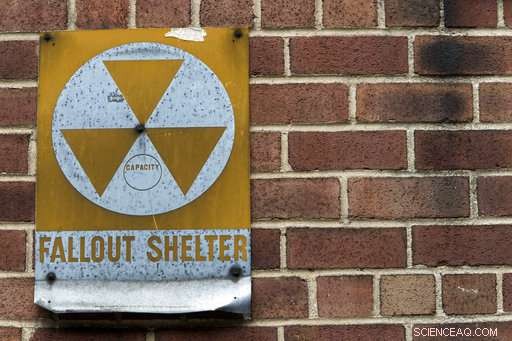
Op deze dinsdag 16 januari 2018 foto, een bord met een schuilkelder hangt aan een gebouw aan East 9th Street in New York. De schuilkelders, gemarkeerd met metalen borden met het symbool voor straling - drie verbonden driehoeken in een cirkel - werden begin jaren zestig in tienduizenden gebouwen in het hele land opgesteld tijdens de nucleaire wapenwedloop. Alleen al in New York City waren er ongeveer 18, 000. (AP Foto/Mary Altaffer)
Een generatie Amerikanen wist precies wat ze moesten doen in het geval van een nucleaire aanval - of tijdens een groot vals alarm, zoals die van het weekend in Hawaii. Zoek dekking in een gebouw met een geel schuilkeldersymbool.
Maar deze dagen, dat is misschien niet de beste optie, of zelfs helemaal geen optie.
Overblijfselen uit de Koude Oorlog, de vergrijzende opvanghuizen die ooit in de duizenden op scholen telden, gerechtsgebouwen en kerken zijn niet onderhouden. En de conventionele wijsheid is veranderd over de vraag of een dergelijk opvangsysteem nodig is in een tijd waarin een aanval eerder van een zwakke schurkenstaat of terroristische groepering komt dan van een supermacht.
"We zitten niet in een Koude Oorlog-scenario. We zijn in 2018, " zei dr. Irwin Redlener, hoofd van het National Center for Disaster Preparedness aan het Earth Institute van Columbia University. "We worden niet geconfronteerd met wat we 50 jaar geleden zagen, toen de Sovjet-Unie en de VS kernkoppen op elkaar hadden gericht die de wereld zouden verwoesten. Er is een dreiging, maar het is een ander soort bedreiging vandaag."
Mensen wisten niet zeker wat ze zaterdag moesten doen toen Hawaii per ongeluk een waarschuwing van een mobiele telefoon stuurde voor een inkomende ballistische raket en deze 38 minuten niet introk. De staat had de raketwaarschuwingsinfrastructuur opgezet nadat Noord-Korea had aangetoond dat zijn raketten het bereik hadden om de eilanden te bereiken. Bestuurders lieten auto's achter op een snelweg en zochten onderdak in een tunnel. Ouders zaten met hun kinderen in badkuipen. Studenten stormden over de campus van de Universiteit van Hawaï om dekking te zoeken in gebouwen.
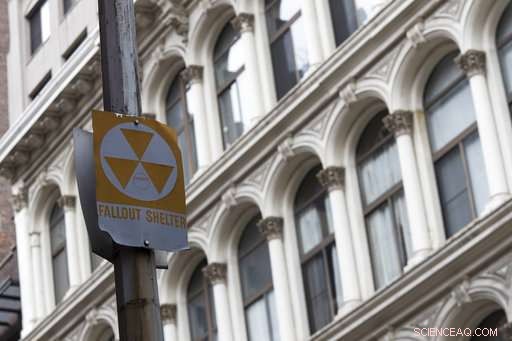
Op deze dinsdag 16 januari 2018 foto, fallout shelter-borden hangen aan een lantaarnpaal op East 11th Street in New York. In een echte nucleaire aanval, dekking zoeken in een gebouw met het verroeste gele fallout-shelter-symbool is misschien niet meer de beste optie. Experts zeggen dat de schuilplaatsen in scholen en gerechtsgebouwen vaak verouderde overblijfselen zijn uit de Koude Oorlog die niet zijn onderhouden. (AP Foto/Mary Altaffer)
Het valse alarm is het perfecte moment om te praten over wat te doen in zo'n noodsituatie, Redlener zei, omdat mensen er meestal niet over willen praten. Helemaal niet.
"Maar het is een reële mogelijkheid, " zei hij. "Stadsambtenaren zouden moeten praten over wat hun burgers zouden moeten doen als er een aanval zou plaatsvinden. En het is een noodzaak voor individuen en families om te praten over en hun eigen plan te ontwikkelen van wat ze zouden doen."
New Yorkers die deze week werden gevraagd waar ze onderdak zouden zoeken tijdens een raketaanval, zeiden dat ze geen idee hadden.
"Het enige wat ik kan bedenken is, Ik zou rennen, " zei Sabrina Shephard, 45, van Manhattan. "Waar we zouden rennen, Ik weet het niet, omdat ik niet weet of New York schuilkelders heeft of zoiets."
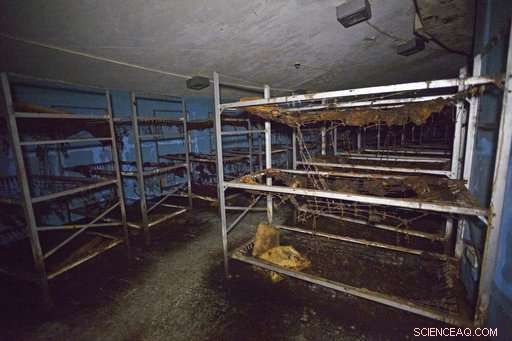
Op deze dinsdag 26 september 2017 foto, een baai met stapelbedden is te zien in een halvemaanvormige kamer in een bunker uit de Koude Oorlog voor de burgerbescherming in New Orleans. Een generatie Amerikanen wist precies wat ze moesten doen in het geval van een nucleaire aanval - of tijdens een groot vals alarm, zoals die van het weekend in Hawaii. Zoek dekking in een gebouw met een geel schuilkeldersymbool. Maar deze dagen, dat is misschien niet de beste optie, of zelfs helemaal geen optie. (Max Becherer /De advocaat via AP)
De schuilkelders, marked with metal signs featuring the symbol for radiation—three joined triangles inside a circle—were set up in tens of thousands of buildings nationwide in the early 1960s amid the nuclear arms race. In New York City alone there were believed to be about 18, 000.
The locations were chosen because they could best block radioactive material. Anything could be a shelter as long as it was built with concrete, cinder blocks or brick, had no windows, and could be retrofitted quickly with supplies, an air filtration system and potable water.
But the idea was controversial from the start, especially since one of the scenarios at the time, a full-scale nuclear war between the U.S. and the Soviet Union, would have left few survivors. By the 1970s, the concept was abandoned. A FEMA spokeswoman said the agency doesn't even have current information on where the shelters are located.
New York City education officials announced last month they are taking down the fallout shelter signs at schools. In Minot, North Dakota, just a few miles from the base where dozens of U.S. missiles are at the ready, a few fallout shelter signs remain, but their status as viable refuges isn't known.
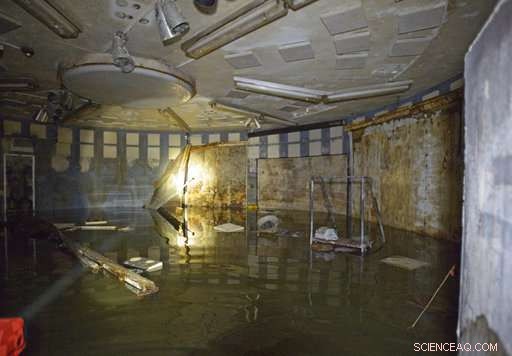
Op deze dinsdag 26 september 2017 foto, a flashlight illuminates the main command center of a Cold War era Civil Defense bunker in New Orleans. The fallout shelters, marked with metal signs featuring the symbol for radiation - three joined triangles inside a circle - were set up in tens of thousands of buildings nationwide in the early 1960s amid the nuclear arms race. (Max Becherer /The Advocate via AP)
So what should you do if there is a nuclear attack now?
The good news:You may actually survive, because a nuclear attack today is more likely to be just one bomb—perhaps a small device, smuggled into a city inside a truck, or a single missile lobbed by North Korea that actually makes it across the water. The bad news:You have between 15 and 20 minutes to get to a safe space.
Eliot Calhoun, a disaster planner for New York's Emergency Management Department, said the smartest thing to do is stay put in a spot with as few windows and as many walls as possible.
"Don't go outside unless you absolutely must, " hij zei.
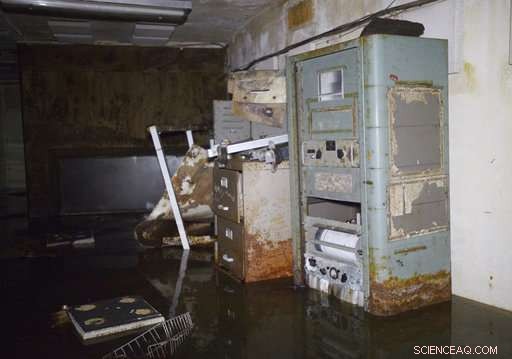
Op deze dinsdag 26 september 2017 foto, old office equipment stands in a room near the entryway of a Cold War era Civil Defense bunker located in the neutral ground of West End Boulevard near Robert E. Lee Boulevard in New Orleans, La. Relics from the Cold War, the aging shelters that once numbered in the thousands in schools, courthouses and churches haven't been maintained. And conventional wisdom has changed about whether such a shelter system is necessary in an age when an attack is more likely to come from a weak rogue state or terrorist group rather than a superpower. (Max Becherer /The Advocate via AP)
Subterranean subway stations might be a good place to shelter if you happen to be in one when an attack happens, but experts say tunnels could also be dangerous if they are structurally compromised by a blast.
New Yorker Joe Carpenter emerged from a post office with a faded fallout shelter sign this week and admitted that he had never thought about what to do in the event of an incoming missile.
"I probably would just huddle with the masses and go along with the crowd, because I've never really considered it, " he said. "It's like everything else:Do we really ponder what's at the end of the road?"
-
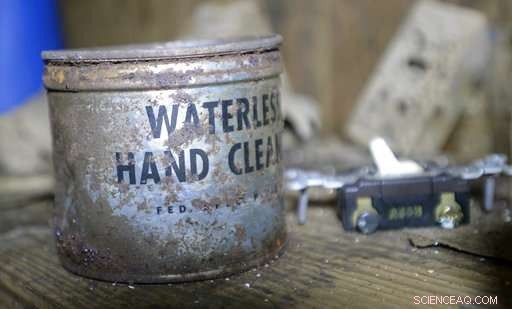
Op deze dinsdag 26 september 2017 foto, a container of waterless hand cleaner sits in a storage room inside an abandoned Cold War era Civil Defense bunker in New Orleans. Relics from the Cold War, the aging shelters that once numbered in the thousands in schools, courthouses and churches haven't been maintained. And conventional wisdom has changed about whether such a shelter system is necessary in an age when an attack is more likely to come from a weak rogue state or terrorist group rather than a superpower. (Max Becherer /The Advocate via AP)
-
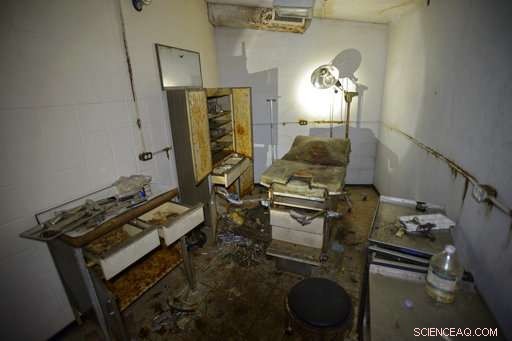
Op deze dinsdag 26 september 2017 foto, an infirmary complete with a medical bed and medical instruments is seen inside a Cold War era Civil Defense bunker in New Orleans. Relics from the Cold War, the aging shelters that once numbered in the thousands in schools, courthouses and churches haven't been maintained. And conventional wisdom has changed about whether such a shelter system is necessary in an age when an attack is more likely to come from a weak rogue state or terrorist group rather than a superpower. (Max Becherer /The Advocate via AP)
-
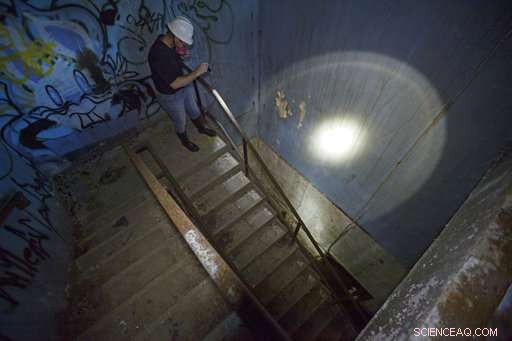
Op deze dinsdag 26 september 2017 foto, Derek Boese, the Chief Administrative and Public Information Officer for the Southeast Louisiana Flood Protection Authority-East, uses a flashlight to illuminate the stair well of a Cold War era Civil Defense bunker in New Orleans. In a real nuclear disaster, taking cover in a building bearing a rusted yellow fallout shelter symbol may not be the best option anymore. Experts say the shelters in schools and courthouses are often aging relics from the Cold War that haven't been maintained. And conventional wisdom has changed. (Max Becherer /The Advocate via AP)
-
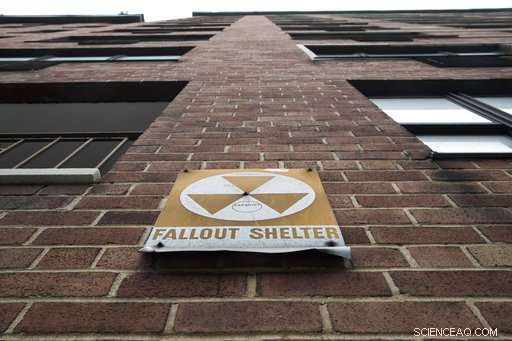
Op deze dinsdag Jan. 16, 2018 photo, a fallout shelter sign hangs on a building on East 9th Street in New York. A generation of Americans knew just what to do in the event of a nuclear attack—or during a major false alarm, like the one over the weekend in Hawaii. Take cover in a building bearing the yellow fallout shelter symbol. But these days, that might not be the best option, or even an option at all. (AP Photo/Mary Altaffer)
© 2018 The Associated Press. Alle rechten voorbehouden.
 Grenzen geen barrière voor thermo-elektriciteit
Grenzen geen barrière voor thermo-elektriciteit Onderzoekers ontwikkelen nieuwe chip voor superieure forensische detectie van bloedresten
Onderzoekers ontwikkelen nieuwe chip voor superieure forensische detectie van bloedresten Hoe licht kan een opvouwbare en duurzame batterij zijn?
Hoe licht kan een opvouwbare en duurzame batterij zijn? Ontdekking kan nucleair afval verminderen met een verbeterde methode om moleculen chemisch te ontwikkelen
Ontdekking kan nucleair afval verminderen met een verbeterde methode om moleculen chemisch te ontwikkelen Van nata de coco tot computerschermen:Cellulose krijgt een kans om te schitteren
Van nata de coco tot computerschermen:Cellulose krijgt een kans om te schitteren
Hoofdlijnen
- De vergeten wetenschapper die de weg vrijmaakte voor de ontdekking van de DNA-structuur
- Celwand: definitie, structuur en functie (met diagram)
- Hoe verschilt DNA & RNA?
- Nieuw apparaat zoomt in op microbengedrag op de juiste schaal
- Mannelijke dolfijnen bieden geschenken aan om vrouwtjes aan te trekken
- Waarom het zo moeilijk is om schepen bij te houden die niets goeds doen?
- Een JELL-O-model van een diercel maken
- Cowpea beschermd tegen een verwoestende plaag, gratis voor kleine Afrikaanse boeren
- Wat is een kruisverwijzingssysteem?
- Geadopteerde kinderen hebben een nauwere band met hun geboortefamilie nodig, volgens nationaal onderzoek:

- Studie:Leningvervangende beurzen verhogen het slagingspercentage van studenten met een laag inkomen

- Hoe gaat het met zeevarenden als geautomatiseerde schepen het overnemen? Wetenschappers voorspellen de toekomst

- Wil je een hete voorraadtip? Vermijd dit type beleggingsfonds

- Sociologen bestuderen de invloed van religie op de ontwikkeling van kinderen
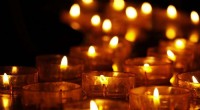
 De kleine dingen zweten
De kleine dingen zweten Wat is snaartheorie?
Wat is snaartheorie?  Insecticide en klimaatopwarming hebben invloed op insectengemeenschappen
Insecticide en klimaatopwarming hebben invloed op insectengemeenschappen Goed bewaarde wolharige neushoorn uit de ijstijd gevonden in Siberië
Goed bewaarde wolharige neushoorn uit de ijstijd gevonden in Siberië Sugar van Water
Sugar van Water Hoe doen levende dingen energie?
Hoe doen levende dingen energie?  Singapore Airlines lanceert langste vlucht ter wereld
Singapore Airlines lanceert langste vlucht ter wereld Onderzoekers demonstreren zeer efficiënte emissie van dispersieve golven in met gas gevulde holle-kern fotonische kristalvezels
Onderzoekers demonstreren zeer efficiënte emissie van dispersieve golven in met gas gevulde holle-kern fotonische kristalvezels
- Elektronica
- Biologie
- Zonsverduistering
- Wiskunde
- French | Italian | Spanish | Portuguese | Swedish | German | Dutch | Danish | Norway |

-
Wetenschap © https://nl.scienceaq.com

